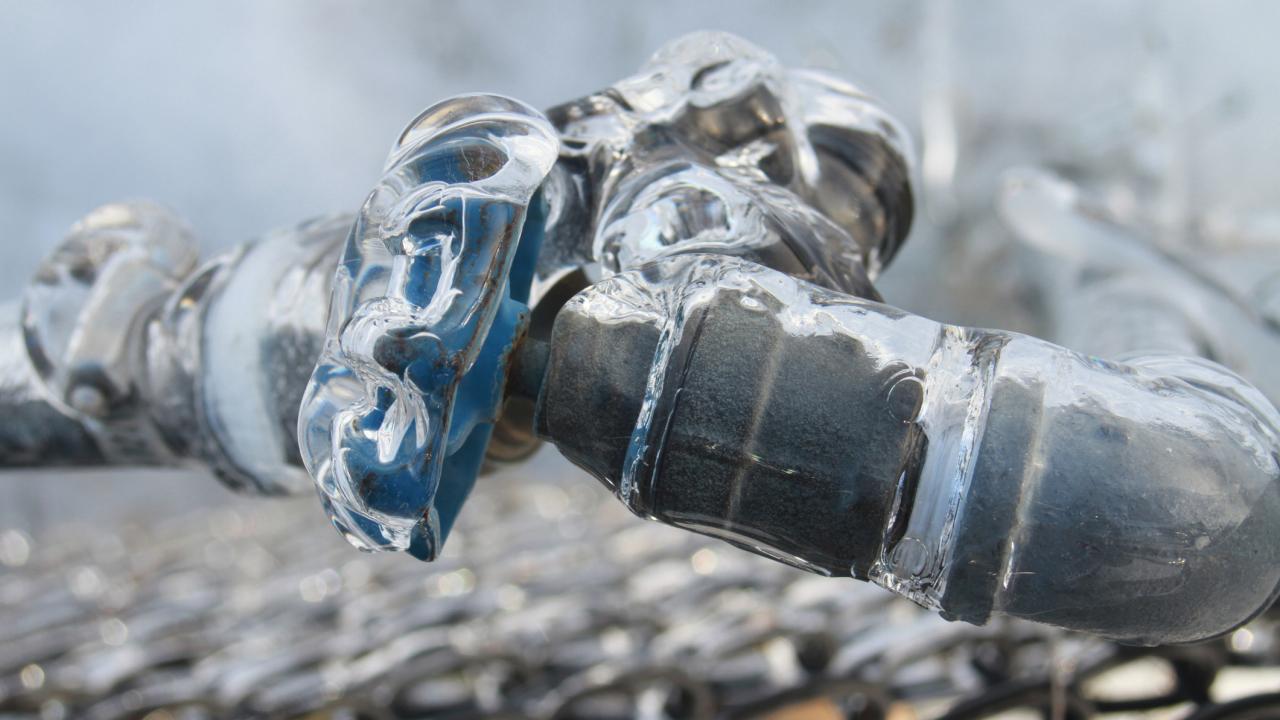Shielding Pipes from Freezing Issues: Key Approaches
Shielding Pipes from Freezing Issues: Key Approaches
Blog Article
This post directly below pertaining to Winter Plumbing Precautions: Preventing Frozen Pipes is highly remarkable. You should check this stuff out.

Cold weather can damage your plumbing, particularly by freezing pipelines. Below's just how to avoid it from happening and what to do if it does.
Intro
As temperature levels decrease, the threat of icy pipes boosts, potentially causing costly fixings and water damage. Comprehending how to stop frozen pipelines is crucial for homeowners in cool environments.
Avoidance Tips
Shielding vulnerable pipelines
Cover pipes in insulation sleeves or use warmth tape to protect them from freezing temperature levels. Concentrate on pipelines in unheated or exterior locations of the home.
Heating techniques
Maintain indoor rooms sufficiently heated, particularly areas with pipes. Open closet doors to allow cozy air to circulate around pipelines under sinks.
Exactly how to determine frozen pipes
Look for decreased water circulation from taps, uncommon smells or sounds from pipes, and noticeable frost on subjected pipelines.
Long-Term Solutions
Structural adjustments
Think about rerouting pipes far from outside wall surfaces or unheated areas. Add added insulation to attic rooms, basements, and crawl spaces.
Updating insulation
Purchase top notch insulation for pipelines, attic rooms, and walls. Correct insulation helps keep regular temperature levels and decreases the risk of frozen pipelines.
Shielding Outdoor Pipes
Yard pipes and outdoor faucets
Separate and drain garden pipes before winter season. Install frost-proof spigots or cover outside faucets with insulated caps.
Comprehending Icy Pipes
What causes pipelines to ice up?
Pipelines freeze when revealed to temperatures listed below 32 ° F (0 ° C) for extended periods. As water inside the pipes freezes, it expands, taxing the pipeline wall surfaces and possibly causing them to break.
Threats and problems
Frozen pipes can result in water system interruptions, home damages, and expensive repair work. Burst pipes can flood homes and trigger substantial architectural damage.
Signs of Frozen Pipeline
Determining frozen pipes early can stop them from breaking.
What to Do If Your Pipes Freeze
Immediate activities to take
If you presume frozen pipes, maintain taps open up to relieve pressure as the ice thaws. Utilize a hairdryer or towels taken in warm water to thaw pipelines slowly.
Final thought
Protecting against icy pipelines requires positive procedures and fast actions. By recognizing the causes, indications, and preventive measures, homeowners can protect their pipes during winter.
5 Ways to Prevent Frozen Pipes
Drain Outdoor Faucets and Disconnect Hoses
First, close the shut-off valve that controls the flow of water in the pipe to your outdoor faucet. Then, head outside to disconnect and drain your hose and open the outdoor faucet to allow the water to completely drain out of the line. Turn off the faucet when done. Finally, head back to the shut-off valve and drain the remaining water inside the pipe into a bucket or container. Additionally, if you have a home irrigation system, you should consider hiring an expert to clear the system of water each year.
Insulate Pipes
One of the best and most cost-effective methods for preventing frozen water pipes is to wrap your pipes with insulation. This is especially important for areas in your home that aren’t exposed to heat, such as an attic. We suggest using foam sleeves, which can typically be found at your local hardware store.
Keep Heat Running at 65
Your pipes are located inside your walls, and the temperature there is much colder than the rest of the house. To prevent your pipes from freezing, The Insurance Information Institute suggests that you keep your home heated to at least 65 degrees, even when traveling. You may want to invest in smart devices that can keep an eye on the temperature in your home while you’re away.
Leave Water Dripping
Moving water — even a small trickle — can prevent ice from forming inside your pipes. When freezing temps are imminent, start a drip of water from all faucets that serve exposed pipes. Leaving a few faucets running will also help relieve pressure inside the pipes and help prevent a rupture if the water inside freezes.
Open Cupboard Doors
Warm your kitchen and bathroom pipes by opening cupboards and vanities. You should also leave your interior doors ajar to help warm air circulate evenly throughout your home.

Hopefully you enjoyed our section about Helpful Tips to Prevent Frozen Pipes this Winter. Many thanks for finding the time to read through our article post. Loved our article? Please share it. Let other people discover it. Thanks a lot for your time. Please stop by our blog back soon.
Click Here Report this page